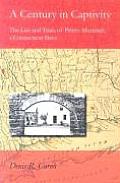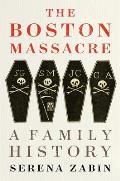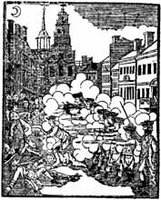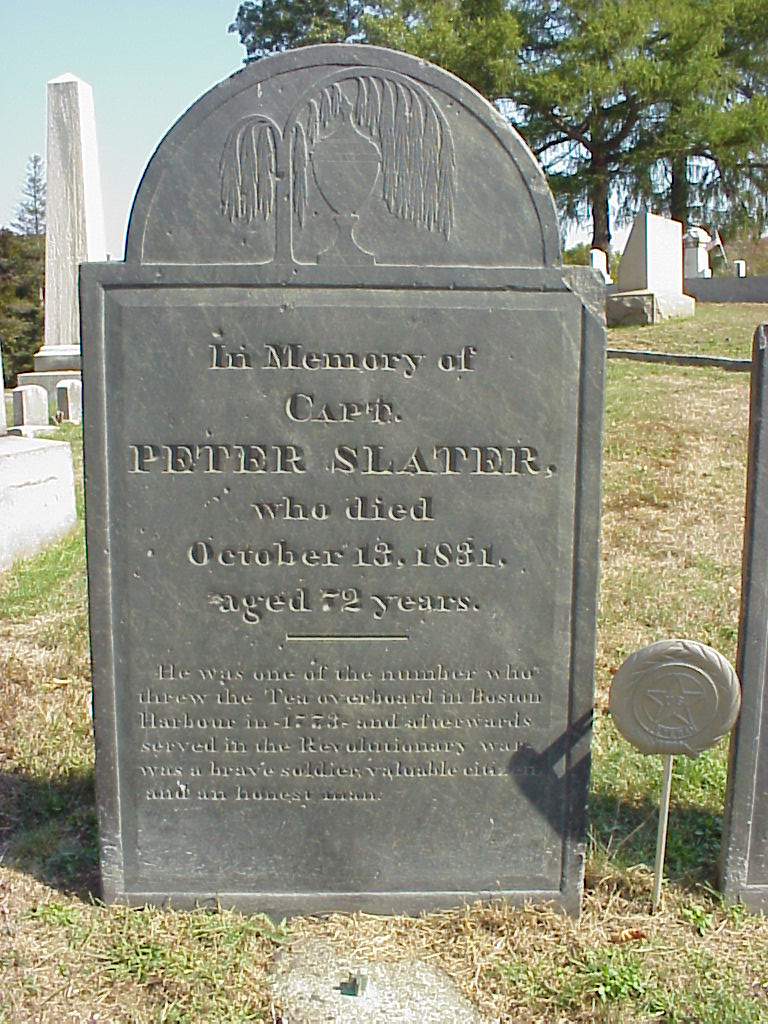Here are the answers to the questions remaining from
part 1 of the Great 1770 Quiz, along with the background and sources for each answer.
III. Match the person to the weapon he reportedly carried at the Boston Massacre.
1) catstick
2) cordwood stick
3) firelock and bayonet
4) Highland broadsword
A) Crispus Attucks
B) Benjamin Burdick
C) John Carroll
D) Christopher Monk
There are two ways to tackle this on Google, I think: pairing the phrase “
Boston Massacre” with the men’s names, and pairing “Boston Massacre” with the
weapons.
The first search shows that of these four people,
John Carroll was a defendant in the trial—i.e., a
soldier. We know those grenadiers were armed with firelocks (muskets) and bayonets.
From the other direction, “Highland broadsword” points to several sources naming
Benjamin Burdick; “cordwood stick” to several naming
Crispus Attucks; and “catstick” to
this Boston 1775 posting about
Christopher Monk.
One further comment on Burdick and his broadsword. Boston records show he was “Constable of the Town House Watch,” head of the nighttime patrol in the center of town. However, he never identified himself as such in his testimonies on the Massacre—I assume everybody at the time already knew.
As a result, until I wrote about Boston’s
watchmen in a paper titled (after a quote from Burdick) “I Never Used to Go Out with a Weapon,” most people didn’t analyze his behavior through that role. The Highland broadsword wasn’t evidence of a man out for trouble; it was evidence of a man out to do his job of keeping the peace.
All four people commenting on this question—
kmjones234, Kathy, Justin C, and
John—put the weapons in the right hands.
IV. Followup: Who used “wouldring sticks” as weapons in March 1770?
Google the phrase “wouldring sticks,” and the
only references that come up point to the
ropemakers of Gray’s ropewalk during their brawl with redcoats on 1 March. The phrase appears in Boston’s
Short Narrative of the Horrid Massacre in 1770 and in many accounts based on that source.
Those tools were also called “wouldering sticks” and “way sticks.” Ropemakers used them to help twist large cables tighter. But a thick, tapered stick could be useful in other situations as well.
Again,
kmjones234, Kathy, Justin C, and
John all answered this question correctly.
V. Which of the following men did the Boston town meeting elect to the Massachusetts house in May 1770?
- John Adams
- Samuel Adams
- James Bowdoin
- Thomas Cushing
- John Hancock
- James Otis, Jr.
- William Phillips
According to Massachusetts’s charter, Boston could elect four men to the lower house of the
General Court. Every other town could elect only two. (That meant Boston’s
population, more than twice the size of any other town, was underrepresented. However, its representatives could easily attend sessions in Boston, and they had outsized influence.)
From 1766 to 1769 the
town meeting elected the same four men to the legislature each year:
Thomas Cushing,
James Otis,
Samuel Adams, and
John Hancock. But the effects of
his coffee-house brawl in September 1769 had addled Otis so much that in April he shot a pistol out of his window on School Street. He therefore needed to be replaced.
Over those same years
James Bowdoin had served on the
Massachusetts Council, but in 1769 Gov.
Francis Bernard “negatived” or vetoed him along with a bunch of other troublemakers. That meant Boston had an active Whig politician without an official seat, and a seat needing someone to fill it. People sensed a solution.
Here’s the
published record of Boston’s town meetings from 1770 to 1777. The election on 8 May 1770 is on page 21. That shows the four men elected that day were Hancock (511 votes out of 513), Cushing (510), Samuel Adams (510), and Bowdoin (439).
Those weren’t Boston’s representatives for the legislative year, though. When the Massachusetts General Court chose its new Council later in May, members once again named James Bowdoin to that upper chamber—and acting governor
Thomas Hutchinson decided to accept him. That left his legislative seat vacant. On 6 June Boston had another town meeting (page 33), and Bostonians chose a young lawyer originally from
Braintree to represent them:
John Adams (418 votes out of 536).
In 1771 John Adams declined to run again, and Otis was reelected (page 53). Then Otis had another bout of
insanity and
lost the support of voters. In 1772 the town chose
William Phillips as its fourth representative (page 78).
Kathy, Justin C, and
John answered this question completely.
VI. Followup: In what building did the Massachusetts house meet in 1770?
To punish Boston and reduce the influence of its representatives, Gov. Francis Bernard convened the Massachusetts General Court in
Cambridge in May 1769. That of course produced a lot of arguments about whether he was right to do so. Acting governor Thomas Hutchinson followed that lead and also convened the General Court in Cambridge.
The Massachusetts Secretary of State’s office
has a webpage linking to the journals of the Massachusetts house as reprinted by the Massachusetts Historical Society. Those volumes have handy introductions about each year’s legislatives tussles. The
title page of the 1770 volume states where the legislature was convened: “at
Harvard-College in
Cambridge, in the County of
Middlesex.”
It takes a little more digging to determine in what
building the house met. The 1770 minutes contain many references to messages or people going back and forth between the house and the Council. Gov. Hutchinson and the Council were in
“the Philosophy Chamber,” and the lower house was in “the Chapel.”
There’s some debate in the literature as to whether “the Chapel” meant Holden Chapel, built in 1744, or the ground-floor chapel of Harvard Hall, rebuilt in 1766. We know the Philosophy Chamber was in Harvard Hall. We also know the legislature had met in the previous Harvard Hall during the
smallpox epidemic of 1764; in fact, a
fire that started during that session was why the hall had to be rebuilt. Most important, we know the
architect of the new building was none other that Gov. Bernard, who got to choose where the legislature met.
Thus, the consensus now, as
this guide to Massachusetts legislators specifies, is that the Massachusetts house met on the ground floor of Harvard Hall.
Justin C and
John both identified “Harvard College,” earning at least partial credit for this question.
TOMORROW: Pseudonyms and more.


















